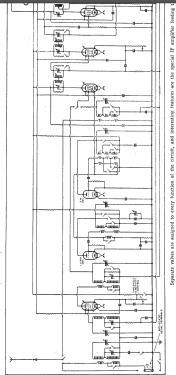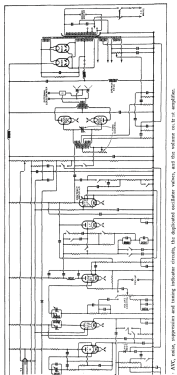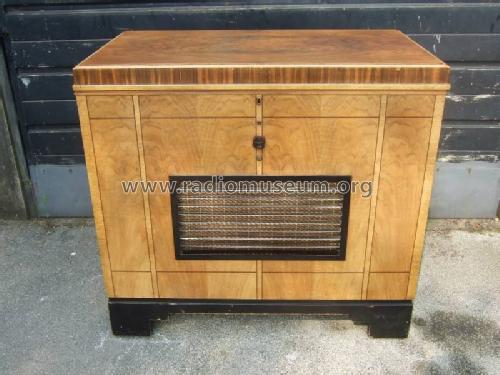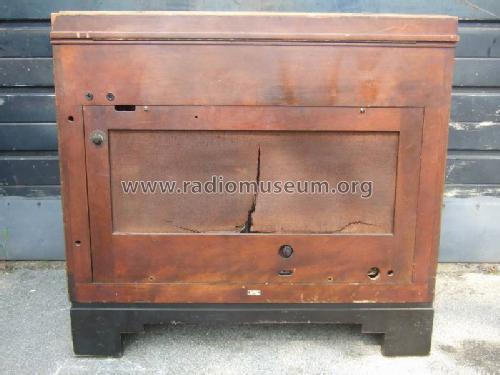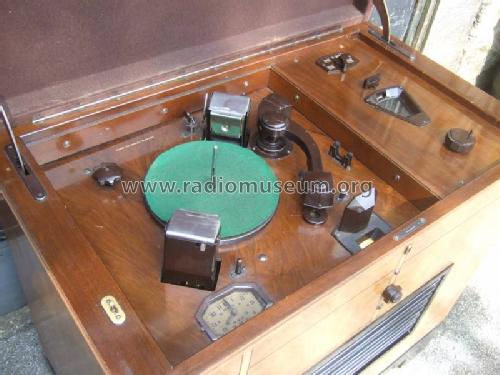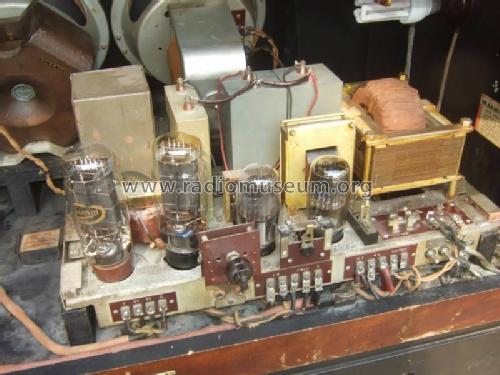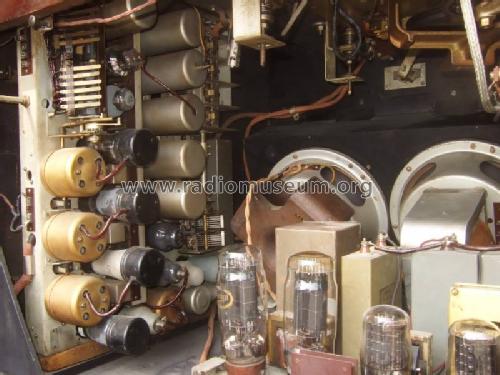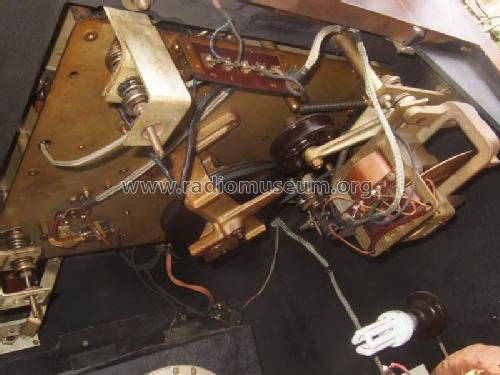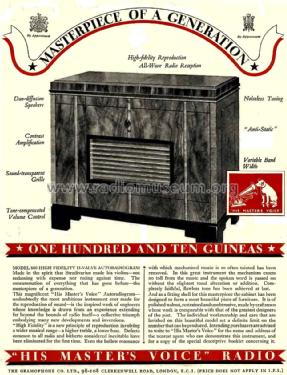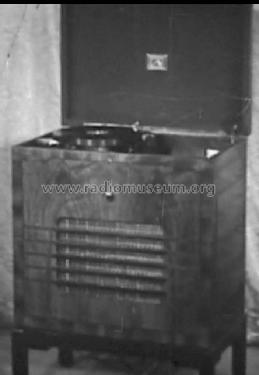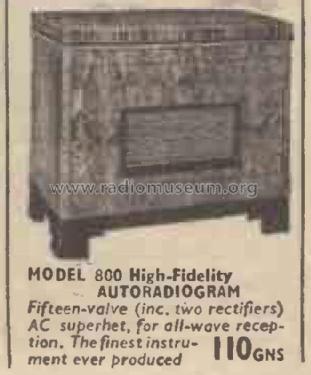Autoradiogram 800
HMV (Brand), His Masters Voice, The Gramophone Company Ltd.; Middlesex
- Country
- Great Britain (UK)
- Manufacturer / Brand
- HMV (Brand), His Masters Voice, The Gramophone Company Ltd.; Middlesex
- Year
- 1935–1937
- Category
- Broadcast Receiver - or past WW2 Tuner
- Radiomuseum.org ID
- 225167
Click on the schematic thumbnail to request the schematic as a free document.
- Number of Tubes
- 15
- Main principle
- Superhet with RF-stage
- Wave bands
- Broadcast, Long Wave and more than two Short Wave bands.
- Details
- Changer (Record changer)
- Power type and voltage
- Alternating Current supply (AC) / 200-210; 211-230; 231-250 Volt
- Loudspeaker
- 2 Loudspeakers
- Power out
- 6 W (undistorted)
- Material
- Wooden case
- from Radiomuseum.org
- Model: Autoradiogram 800 - HMV Brand, His Masters Voice,
- Shape
- Console, Highboy (legs > 50 %).
- Dimensions (WHD)
- 38 x 34 x 21.75 inch / 965 x 864 x 552 mm
- Notes
-
Hi-Fidelity Auto Radiogram Model 800
An Instrument Exceptional of Wide Scope Refinement of Performance
Advances in both superheterodyne circuit design and in the technique of high-quality reproduction have been both numerous and rapid during recent months, and the HMV Model 800 may safely be said to epitomize the present state of our knowledge of the art of electro-acoustic entertainment. It is, however, characteristic of this instrument as an HMV product that enthusiasm for technical improvements per se has not been allowed to run riot to the extent of creating any suggestion of fierceness in the performance.
The range and sensitivity of the radio receiver are kept well in hand by an elaborate QAVC system, the loudspeakers are muted during all changes of the circuit by means of the control switches, and the audio-frequency range, while extending high enough to give reproduction will prove a revelation to most people, has not been made so wide as to introduce or overemphasize alien noises which are so often the accompaniment of so-called high fidelity reproduction. The maximum frequency response is from 40 to 8,000 cycles, but this, of course, can only be used under favorable circumstances. A switch is provided giving three other alternative frequency ranges up to 7,000, 5,000, and 3,000 cycles respectively.
The frequency response is restricted by altering the bandwidth of the HF and IF circuits and is not accomplished wholly by tone correction in the LF stages, as is sometimes the case.AVC is in operation on all four ranges but the Q valve, providing noise suppression between stations, does not operate with the switch in the most selective position. In the two high-fidelity positions (7 kc/s and 8 kc/s) the point at which the noise suppression control comes into operation can be pre-set by means of a graduated knob at the back of the cabinet. In association with the selectivity, control is a switch for bringing into operation the contrast amplifier. This is a device for increasing the volume range between pianissimo and fortissimo passages in orchestral music and is brought into action by depressing the knob of the selectivity Control.
5 Wave Ranges.
The wave range switch is mounted immediately above the tuning scale and operates a shutter that uncovers the appropriate scales. A high-ratio slow-motion drive is provided, and the tuning knob carries a small handle for rapid exploration of the tuning range. The neon tuning indicator is mounted in a recess in the tuning scale escutcheon plate. In addition to the normal medium and long-wave broadcast ranges, there are three· shortwave ranges covering wavelengths from 13 to 80 metres.
Wireless World Mar 1, 1935, page 222
Two 'Duo-Diffusion' loudspeakers, one permanent, the other mains energised. Neon Tunalite or Cossor neon tuning indicator.
- Price in first year of sale
- 110.00 Gns
- Mentioned in
- Mar 1, 1935, page 222
- Literature/Schematics (1)
- - - Manufacturers Literature
- Author
- Model page created by Alex Kulachenkov. See "Data change" for further contributors.
- Other Models
-
Here you find 427 models, 337 with images and 243 with schematics for wireless sets etc. In French: TSF for Télégraphie sans fil.
All listed radios etc. from HMV (Brand), His Masters Voice, The Gramophone Company Ltd.; Middlesex
